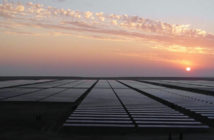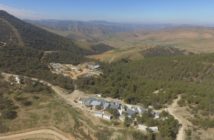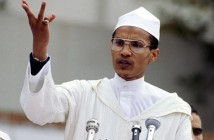A mission from the International Monetary Fund (IMF) visited Rabat from July 7 to 19, 2011 to conduct Article IV discussions. The mission wishes to thank the Moroccan authorities for their excellent cooperation and the highly constructive discussions.
1. Morocco has successfully met major challenges in the past two years. Thanks to sound macroeconomic policy and political reforms, Morocco was well-equipped to address the 2009 international crisis and to respond to the social unrest which has emerged in many countries in the Middle East and North Africa (MENA) region since early 2011. In this challenging environment, Morocco has performed well economically and has seen its social indicators improve.
2. The relatively favorable medium-term outlook would be further improved if macroeconomic policies were reoriented toward achieving high and sustainable rates of growth. In fact, the major challenge for Morocco remains that of achieving a GDP growth rate that will help reduce unemployment and improve living standards, while ensuring medium-term macroeconomic stability. Since early 2011, declining growth among Morocco’s main trading partners and rising commodity prices have complicated efforts to manage macroeconomic stability. Although in 2011 the Moroccan government implemented short-term policies to address these constraints, in 2012 the government is expected to consider reorienting public expenditure and achieving a fiscal sustainability while fostering inclusive and sustainable growth in the medium term.
I. Recent Developments
3. Morocco’s overall economic performance has been sound overall:
• Strong performance by nonagricultural GDP: driven by the strong performance in the manufacturing sector, nonagricultural GDP grew by 4.5 % in 2010 offsetting the contraction in the primary sector. The continued strong performance in the nonagricultural sector—including the tourism sector—and a more robust agricultural output are expected to raise overall GDP growth in 2011 to about 4½-5 percent.
• Inflation remains firmly under control. Average inflation in 2010 remained at the very moderate level of 1 percent. In 2011, a good agricultural year and the fact that prices of certain foodstuffs and petroleum products held steady despite rising international prices, are expected to help limit the increase in the average inflation to around 1½ percent.
• Growth in credit continued against a backdrop of declining liquidity. Credit to the economy grew by 7.4 percent in 2010. During the first five months of 2011, growth in credit slowed down, while banks’ resources were supported by the mobilization of market resources even though customer deposits fell slightly. This trend may be due to the contraction of systemic liquidity as a result of a decrease in foreign assets and a larger-than-usual increase in currency in circulation during the first five months of 2011. However, based on expected growth in GDP and M3, credit could increase by around 6.2 percent in 2011. The authorities estimate credit to increase by 6-8 percent in 2011. The IMF staff projection (approximately 6.2 percent) is within this range.
• A slight deterioration in the external balance due to a terms-of-trade shock. The mission estimates that the current account deficit may increase to about 5 percent of GDP at end-2011. Although Moroccan exports, including phosphates and its derivatives, have performed well, and tourism receipts and transfers from Moroccans living abroad have grown, this may not offset the increase in imports caused by rising international food and oil prices. Gross international reserves are expected to decline slightly at end-2011, while remaining comfortable, at slightly above 5 months of imports of goods and services.
• A worsening budget deficit caused by the sharp increase in expenditures.The budget deficit may reach 5½-6 percent of GDP due to an increase in expenditures amounting to 3 percent of GDP relative to the 2011 budget, largely due to an increase in food and fuel subsidies.
II. International Context and Medium-Term Outlook
4. The international economic recovery in 2010 to some extent supported the revival of growth in Morocco; yet new risks emerged in 2011. While global growth continues to be strong, growth it seems to be slowing down in a number of countries in the Euro zone, Morocco’s main trading partner. Furthermore, persistently high commodity prices, the regional context, and global financial stability add uncertainties to the economic outlook.
5. Morocco is expected to continue recording sound economic performance. Growth in nonagricultural GDP is expected to reach about 5 percent and to contribute to overall GDP growth, which is forecasted to attain 4½-5 percent in 2011. In the medium term, the growth rate may reach 6 percent, mainly depending on the continued implementation of structural reforms and the maintenance of macroeconomic stability. In this regard, the authorities intend to bring the medium-term budget deficit down to around 3 percent of GDP, which would bring total Treasury debt to about 50 percent of GDP. This should slow down the pace of imports, in particular of energy products (thanks in part to more rational consumption patterns) and of consumer goods, which could help to bring the current account deficit down to about 2½ percent of GDP in 2016.
III. Macroeconomic and Structural Policies
A. Fiscal policy
6. In 2011, the increase of certain types of expenditures in response to social demands will lead to an increase in total expenditure by 1½ percent of GDP. Maintaining price stability for certain food and fuel products in the context of sharply rising international commodity prices will increase the cost of subsidies for these products to about 5½ percent of GDP in 2011, considerably in excess of the 2.1 percent of GDP estimated in the 2011 budget. Furthermore, rising civil service wages could push up the wage bill by 0.2 percent of GDP, reaching 10.7 percent of GDP.
7. Counterbalancing measures on the revenue and expenditure side of more than 2 percent of GDP, will allow to achieve a budget deficit of around 5.7 percent of GDP in 2011. Given the importance of demonstrating the government’s determination to maintain fiscal sustainability, the mission believes that there is little room for further measures to increase government expenditure. Revenue efforts were intensified and higher than budgeted revenue were collected at end June 2011 –mainly from indirect taxes. These efforts should continue in the second half of the year and should enhance revenue collection by 1 percent of GDP compared to the 2011 budget. Consequently, total revenues are expected to remain almost unchanged compared to 2010, at around 25 percent of GDP. On the expenditure side, all budget entities have been requested to economize 10 percent of their budget allocations for some nonessential current expenditure items. Moreover, budgeted transfers to some public entities with treasury surpluses will be reduced without affecting their spending capacity. The latter two measures are expected to generate savings of over 1 percent of GDP relative to the 2011 budget. In addition, if elections are held in 2011, the cost of the elections will be absorbed in the existing budget envelope.
8. After containing fiscal expansion in 2011, the authorities are preparing to implement fiscal consolidation measures starting in 2012. The authorities intend to pursue a fiscal consolidation plan to bring the deficit down to 3 percent of GDP in the medium term, which would be in line with a debt to GDP ratio converging to about 50 percent of GDP. In addition, Article 77 of the new constitution and the draft organic budget law for 2012 outline the principle of safeguarding fiscal stability. In the absence of corrective measures, the budget deficit could reach 6½-7½ percent of GDP and consequently public debt will continue to rise.
9. To achieve this fiscal objective, the authorities are prepared to resume and expedite the following reforms:
• Raise revenue. The authorities intend to pursue their resource mobilization efforts by: (i) broadening the tax base; and (ii) improving tax administration. Nontax revenues would also be expected to improve as publicly owned enterprises benefit from the economic recovery and augment their contribution to the budget. The mission believes that a VAT reform should be designed to ensure constant or rising VAT receipts. These and other reforms will maintain or even increase revenues in spite of the decline in customs receipts due to continued trade liberalization.
• Manage and rationalize expenditure. A civil service reform is expected to bring the wage bill down to about 10 percent of GDP in the years ahead. Furthermore, a reform of fuel subsidies, replacing universal subsidies with targeted transfers, would significantly reduce the burden on the budget and would eliminate the vulnerability of public finances with respect to fluctuations in international commodity prices while rationalizing consumption.
• Enhance expenditure efficiency. The authorities also intend to improve the efficiency of public investment by improving project selection procedures and allowing greater private sector participation, including in public infrastructure. This approach, combined with the subsidy reform, would generate greater fiscal space for enhancing social spending, particularly in health and education.
• Ensure the sustainability of the public pension system. According to the latest actuarial projections, public pension plans will soon have to begin using their capital base to finance pension payments; this underscores the need for reforms to ensure the financial sustainability of the public pension system. Phasing in gradual increases in the retirement age and in contributions, coupled with a review of the basic wage used to calculate pensions, would give the pension funds some years of financial sustainability prior to introducing a broader reform of the pension system. A broader reform would include a combination of a pay-as-you-go system and a funded system encompassing a mandatory and an optional component.
IV. Monetary and Exchange Policy
10. Monetary policy has kept inflation in line with the objectives set by Bank Al-Maghrib (BAM). The fact that rising international prices for certain commodities did not pass through also helped to preserve price stability. In the context of a fixed exchange rate and partial capital controls, efficient liquidity management by BAM helped keep the overnight interest rate (operational target) close to the BAM benchmark rate which has remained unchanged at 3.25 percent since March 2009. Beginning in 2008, BAM lowered reserve requirements from 16½ to 6 percent, and in April 2011 withdrew passbook savings accounts from the reserve base, freeing up DH 4.6 billion for banks.
11. The monetary authorities have the tools and capacity to implement the transition to a formal inflation targeting system with a more flexible exchange rate. BAM has the necessary independence, expertise, statistical resources, range of instruments, as well as comfortable exchange reserves. Bank supervision for risk management is effective and foreign currency exposure is at a low level. However, the authorities believe that managing this transition requires ensuring fiscal sustainability and maintaining financial stability. Additional requirements entail more active interbank markets for local currency and foreign exchange as well as reforms of the operational framework for foreign exchange policy to govern active interventions by BAM on the exchange market. The mission considers that in the short term, the foreign exchange market could be further developed by broadening the central bank spread from 0.6 percent to at least 2 percent (the IMF standard for conventional peg regimes) to encourage the development of interbank foreign exchange transactions.
12. Fund staff analysis of Morocco’s real exchange rate based on the three CGER methodologies yields mixed results. This analysis finds that the deviation from the equilibrium rate varies widely among the three methodologies used. However—and despite the fact that the real effective exchange rate depreciated by about 4 percent in 2010—the mission believes that trends in the current account balance since 2007 could point to eroding external competitiveness in the Moroccan economy. A flexible exchange rate regime and further structural reforms would help support competitiveness and provide greater economic policy space.
V. Financial Sector
13. Morocco’s financial sector has made considerable headway, but it would need to mobilize additional resources to keep growing. The banking sector is important, exceeding 120 percent of GDP, supported by the deposits of Moroccans living abroad and the establishment of banking networks in Africa by Moroccan banks. The Casablanca stock exchange is now one of the most capitalized and diversified in terms of sectors in Africa. The authorities have taken steps to promote access to banking and savings services in order to support bank’s deposit mobilization which has slowed down, and to develop markets (development of the rates curve and securitization) to facilitate the asset and liability management of banks, whose resource utilization rates exceed 100 percent on average.
14. The policy of strengthening core capital has been a success. The solvency ratio of the system had risen to 12.3 percent at end-2010, up from 11.8 percent in 2009, and NPLs steadily declined from 6.1 percent of total loans in 2008 to 4.8 percent in 2010. However, credit quality appears to have slipped since 2009 as indicated by the increase in the cost of risk. Efforts to strengthen core capital will continue, in particular for those institutions that have failed to reach the threshold of 9 percent of exposures as targeted by BAM.
VI. Social and Structural Policies
15. The authorities are continuing their efforts to implement an ambitious program of structural reforms to enhance the competitiveness of the economy. The favorable economic performance recorded over the past decade is largely attributable to reforms in key economic sectors (such as the financial sector and public enterprises), and to efforts to improve the business climate, which need to be strengthened. The authorities are continuing to implement reforms designed to create a more dynamic private sector and ensure that private investment makes a more effective contribution to growth. These efforts should facilitate greater economic diversification, create jobs, and lower unemployment. Although significant progress has been made in this area, unemployment is at 9 percent and remains very high among young people, graduates, and women. In this context, reforms designed to enhance labor market flexibility are essential. Furthermore, at end-2009, in partnership with the private sector, the authorities created the National Committee for the Business Environment [Comité National de l’Environnement des Affaires (CNEA)] to expedite efforts to identify and implement reforms pertaining to the business climate. Moreover, a new legal framework is being developed to promote the creation of public-private partnerships (PPPs).
16. The authorities have continued to support consistent social policies which have helped to lower the poverty rate by 6 ½ percent between 2000 and 2008, while improving social indicators. These efforts should be strengthened through a reorientation of fiscal policies which should provide more leeway for raising health and education spending. Furthermore, these social policies are designed to achieve a more equitable distribution of wealth and regional development. In this context, it is important to mention the success of the National Human Development Initiative and the recent extension of medical coverage to include disadvantaged populations (the RAMED medical insurance program). These efforts should be pursued in the context of the advanced stage achieved by the regionalization process.
17. Constitutional reform will enhance efforts to strengthen structural reforms and foster medium-term growth. The new constitution will help develop a legal and institutional framework to consolidate progress in regard to governance, fiscal transparency, the business climate, private sector development, and gender equality. Such policies are expected to support the standard of living while enhancing potential growth.
VII. Conclusion
18. The sound macroeconomic policies put in place over the past decade have equipped Morocco to respond to recent crises.Nonetheless, in order to achieve a high and sustainable growth rate in the medium term, the authorities should adopt strong measures to reorient fiscal policy and continue efforts to improve the business climate. As in the past, IMF staff stands ready to support the government’s reform efforts and maintain ongoing dialogue.
http://www.imf.org/external/np/ms/2011/071911.htm






